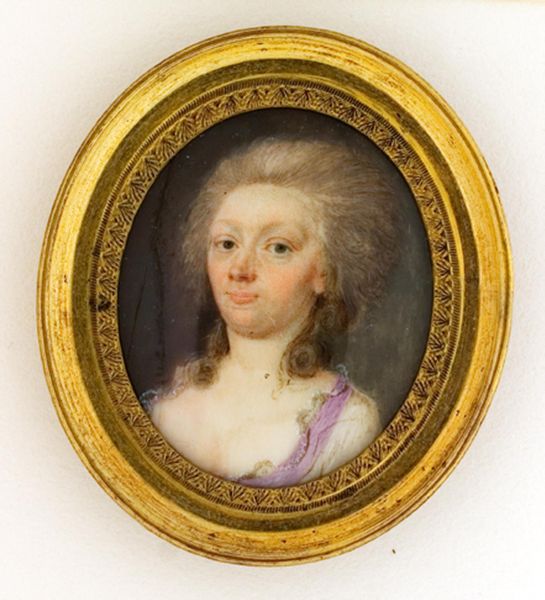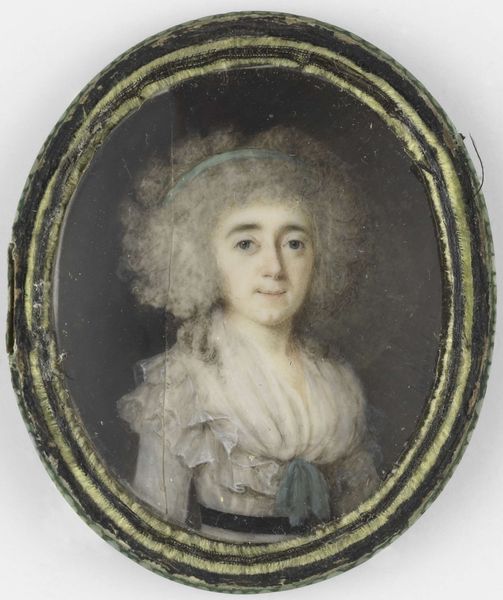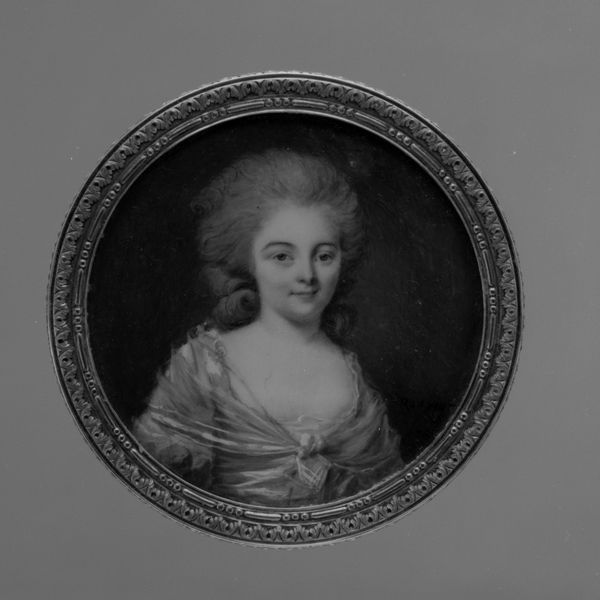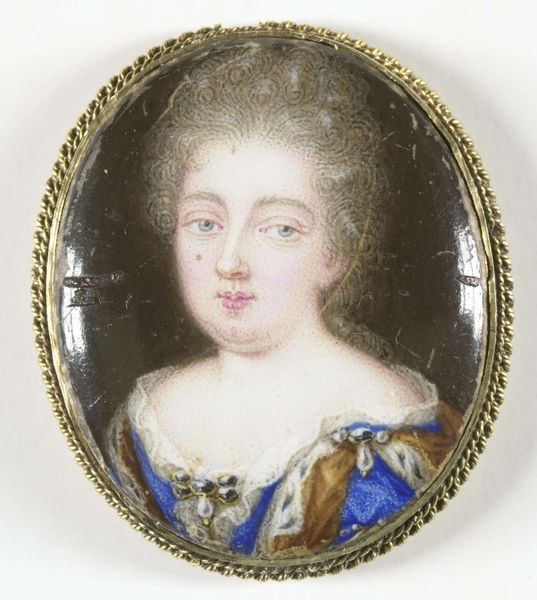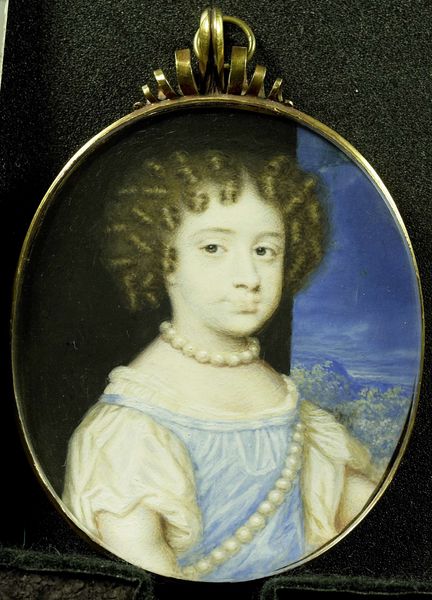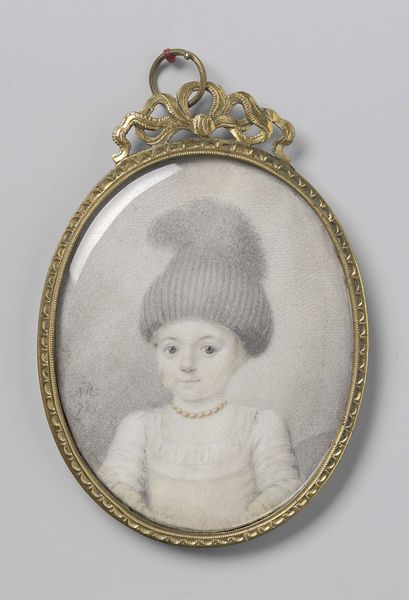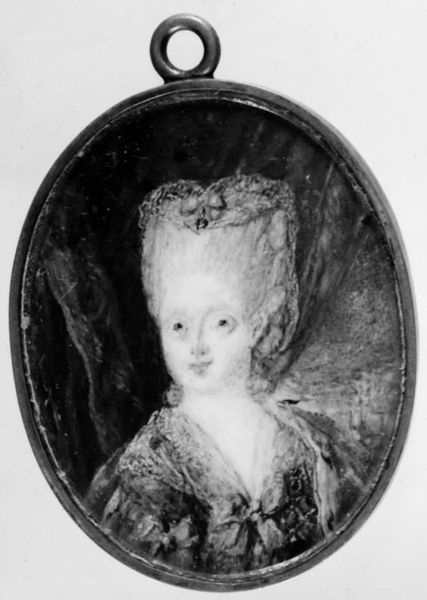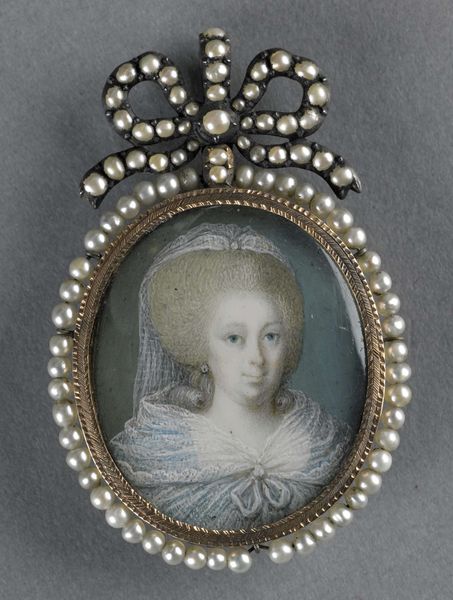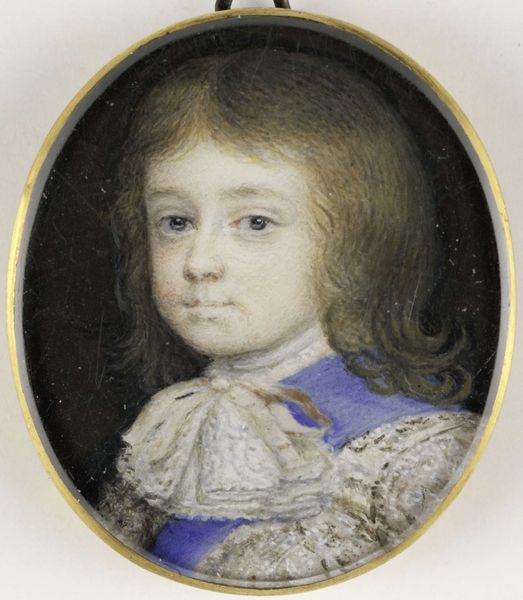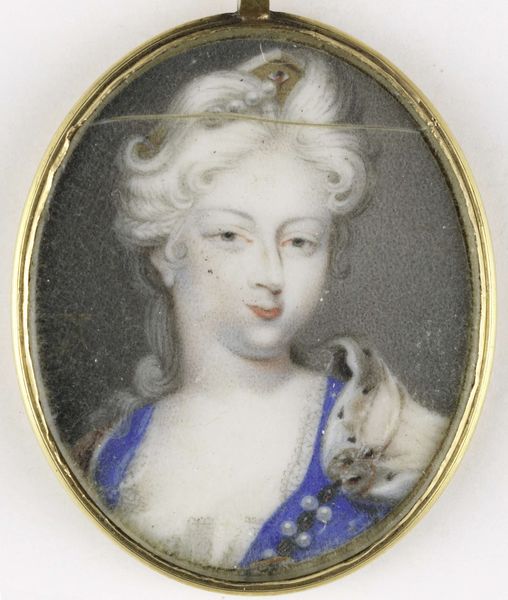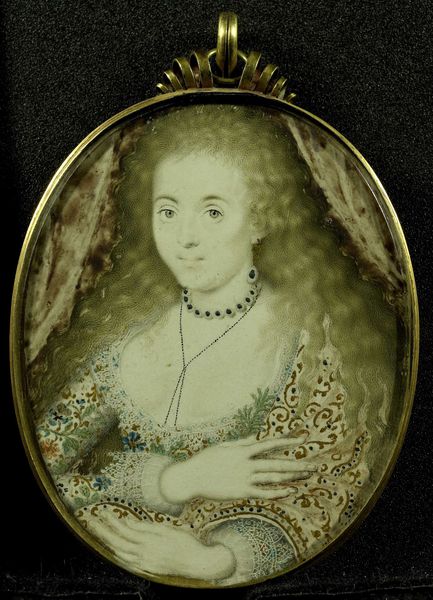
painting, oil-paint
#
portrait
#
painting
#
oil-paint
#
sculpture
#
miniature
#
rococo
Dimensions: height 4 cm, width 3 cm, height 5.3 cm, width 3.2 cm, depth 0.5 cm
Copyright: Rijks Museum: Open Domain
This miniature depicts Willem IV, Prince of Orange-Nassau, as a child. The portrait is dominated by symbols of power and status appropriate for a future leader. Note the ermine fur draped around the young prince; from ancient times, ermine has been a symbol of purity, royalty, and high status. We can see similar use of ermine in portraits throughout history, from depictions of medieval monarchs to Renaissance nobles. This association with purity and power suggests an attempt to imbue the young Willem with the virtues expected of a ruler. The presence of such symbols serves to communicate complex ideas about governance, legitimacy, and divine right. It’s intriguing how these symbols of power tap into a collective consciousness, evoking a sense of authority and tradition. As we observe such symbols, we see the non-linear, cyclical progression of images, resurfacing and evolving across different eras.
Comments
No comments
Be the first to comment and join the conversation on the ultimate creative platform.
